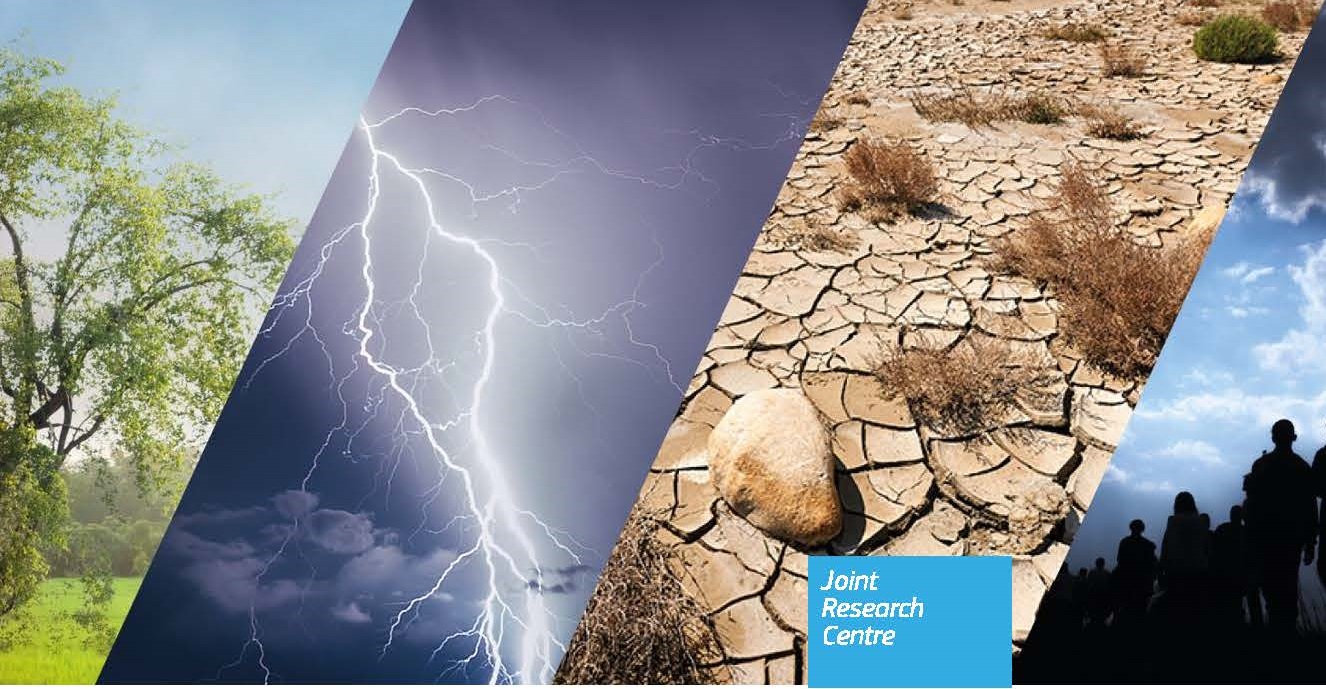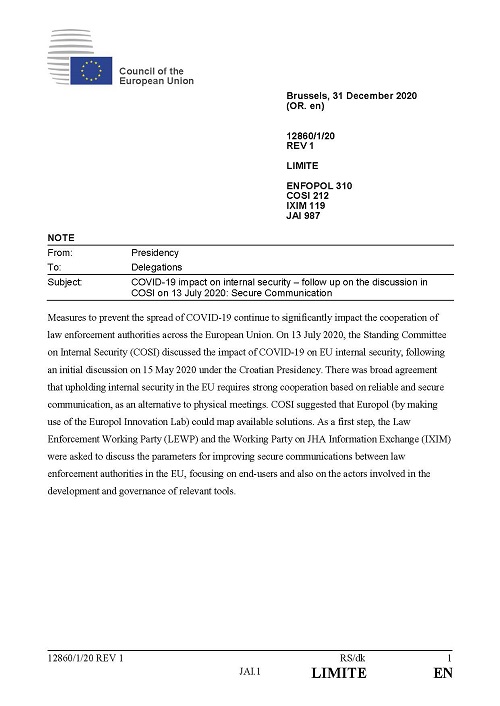New report examines the "climate change–migration nexus" in the Sahel
Topic
Country/Region
25 February 2021
A new report from the EU's Joint Research Centre seeks to provide "empirical evidence of climate migration and mobility" in a region of the Sahel in Western Africa, in particular by linking "population and migration data to indicators of slow-onset climatic events". The report provides useful context and detail to the often-invoked figures of potentially hundreds of millions or even billions of 'climate refugees' in decades to come.
Support our work: become a Friend of Statewatch from as little as £1/€1 per month.

See the report: European Commission Joint Research Centre: Population dynamics, climate change and variability in Western Africa: the case of Sahel regions (pdf)
On the problems with attempting to quantify the number of potential 'climate refugees' in years to come, see: Are We Thinking About Climate Migration All Wrong? (Rolling Stone, 14 March 2020):
"...the hyperfocus by the media and well-meaning advocates on nailing down a global number of climate refugees by a specific calendar year can be problematic, conjuring images of apocalyptic invasions and fanning the flames of nationalism and xenophobia already spreading across the globe. And while these splashy predictions have a shock value that can galvanize action, they ignore nuances that could better serve public discussion and policy — like the fact that the majority of climate migrants move within their own countries, often slowly over time, and usually not very far."
The text below is taken from the JRC report.
Abstract
This report is part of the JRC Climate Change Induced Migration (CLICIM) project. CLICIM aims at the provision of evidence on the nexus between climate change and population dynamics in Africa.
In this report, we analyse the relationship between climate change, population and migration in a selected territory within the Sahel – an already documented case of climate related migration. We base the analysis on the recent JRC net migration estimates at high geographical detail, produced in the context of the CLICIM project. Our contribution is twofold. Firstly, the report provides a mapping of the population exposure to climate change in the selected territory over the period 1975–2015. In particular, it identifies the geographical distribution of populations affected by droughts and how their demographic dynamics have changed over time. Second, the report develops a modelling exercise to investigate the climate change–migration nexus. Results from the model confirm a significant association between net migration and drought intensity, which is more accentuated in rural areas. Model findings also document that increasing temperatures and precipitation have contributed to decreasing net migration over the considered period.
Introduction
This report is part of JRC Climate Change Induced Migration (CLICIM) project. The objective of CLICIM is to identify the relationship between climate change and migration in Africa, the continent with the fastest projected population growth (Lutz et al., 2019) and one of the most vulnerable to climate change due to its high exposure and low adaptive capacity (Riede et al., 2016). As initial steps, CLICIM has produced estimates of net migration at high geographical detail (Alessandrini et al., 2020) and an extensive review of several indicators of climate change (Petroliagkis & Alessandrini, 2021). The knowledge stemming from CLICIM will feed into the final and complex step of formulating scenarios on how many populations will be exposed and eventually move due to climate change.
The CLICIM project analyses the interconnections between climate change – focusing on slow-onset climatic events such as increasing temperatures (UNFCCC, 2012)- and population long-term mobility at macro-level. It will provide a mapping of populations which are exposed to climate change, particularly in Africa. This mapping exercise, conducted at high territorial resolution, will help to target policy interventions towards areas which are suffering the impacts of climate change both in terms of displacements or trapped populations. From the development perspective, the CLICIM project will take into account how population response to climate change, in terms of migration and mobility, varies with the other factors shaping migration, such as socio-economic development, poverty, and agricultural conditions.
This report examines the complex link between climate change and population dynamics at high geographical detail focusing on a territory within West Africa. Specifically, it addresses the following question: how population long-term migration and mobility patterns are related to changing climatic conditions? The report selects a territory between Mali, Senegal and Mauritania, with a long tradition of international migration towards Europe and regional mobility within African continent. The recent policy attention to vulnerable populations in the selected Sahel territories (European Asylum Support Office., 2018) and the growing interest on their migration intentions (Bertoli et al., 2020; Mixed Migration Centre, 2020) justify the focus on this case.
As most of the Western Africa region, the selected territory is characterized by increasing temperatures and highly variable rainfalls since the past decades. Importantly, severe droughts also hit this area in the late 70s and 80s. Scholars have documented how climatic factors have contributed to shape migration and mobility of populations living in this area during the 80s and 90s. In particular, existing qualitative and quantitative studies for the selected territory link out-migration to severe droughts and their negative impacts on food supply. Despite there is no consensus on whether migration from the selected case study area is mostly short or long-term, there is agreement that, in this context, migration and mobility are possible adaptation strategies to cope with the adverse effects of droughts. Yet, a more systematic and long-period overview of demographic and climatic patterns is needed to better understand the role played by climate change on migration dynamics.
The contribution of this report is twofold. First, to provide empirical evidence of climate migration and mobility in the selected territory within Western Africa over the period 1975-2015 using JRC net migration estimates. This constitutes a step to validate the recent net migration at high geographical resolution1 provided by Alessandrini et al. (2020). Notably, net migration estimates (the difference between in-migration and out-migration) is derived from population estimates of the JRC Global Human Settlement Layer (GHSL)2 – a combination of satellite and census data. In particular, this report links population and migration data to indicators of slow-onset climatic events, by focusing on areas of about 56 km2 (or 0.5 degrees). Second, to provide a prototype of the analyses that CLICIM project will carry out for broader areas in Africa.
By overlaying population and climatic data over the period 1975-2015, the report first maps the population that has been exposed to adverse climatic events and describes its dynamics. As a result of the mapping exercise, we document which territories have been hit by extreme and severe droughts in the 80s. As a second step, the report presents a simple modelling exercise to identify the relationship between climate change and migration over the period 1975-2015. Results from the model confirm that drought severity is significantly associated with net migration. If drought severity increases, net migration tends to become lower (in absolute value), with more people out-migrating (or less in-migrating) to the considered territory. Notably, net migration in rural areas is most affected by drought than areas more densely populated. In other words, increasing drought intensity tends to lower net migration more in rural than in densely populated areas. The proposed model also suggests that increasing temperatures tend to decrease net migration. Similarly, the model documents an inverse relationship between precipitation and net migration, with increasing rainfalls associated with net lower net migration (in absolute value).
The report is structured as follows: Section 2 provides an overview of population and climatic patterns in West Africa. Section 3 describes the case study on climate related migration in the selected region, on the basis of existing research. Section 4 describes the main changes of population, net migration, and climatic conditions in the selected case study area. Section 5 maps population exposure to adverse climatic conditions. Section 6 presents the results of a simple modelling exercise to identify the climate change–migration nexus in the selected area. Section 7 concludes.
Our work is only possible with your support.
Become a Friend of Statewatch from as little as £1/€1 per month.
Spotted an error? If you've spotted a problem with this page, just click once to let us know.

